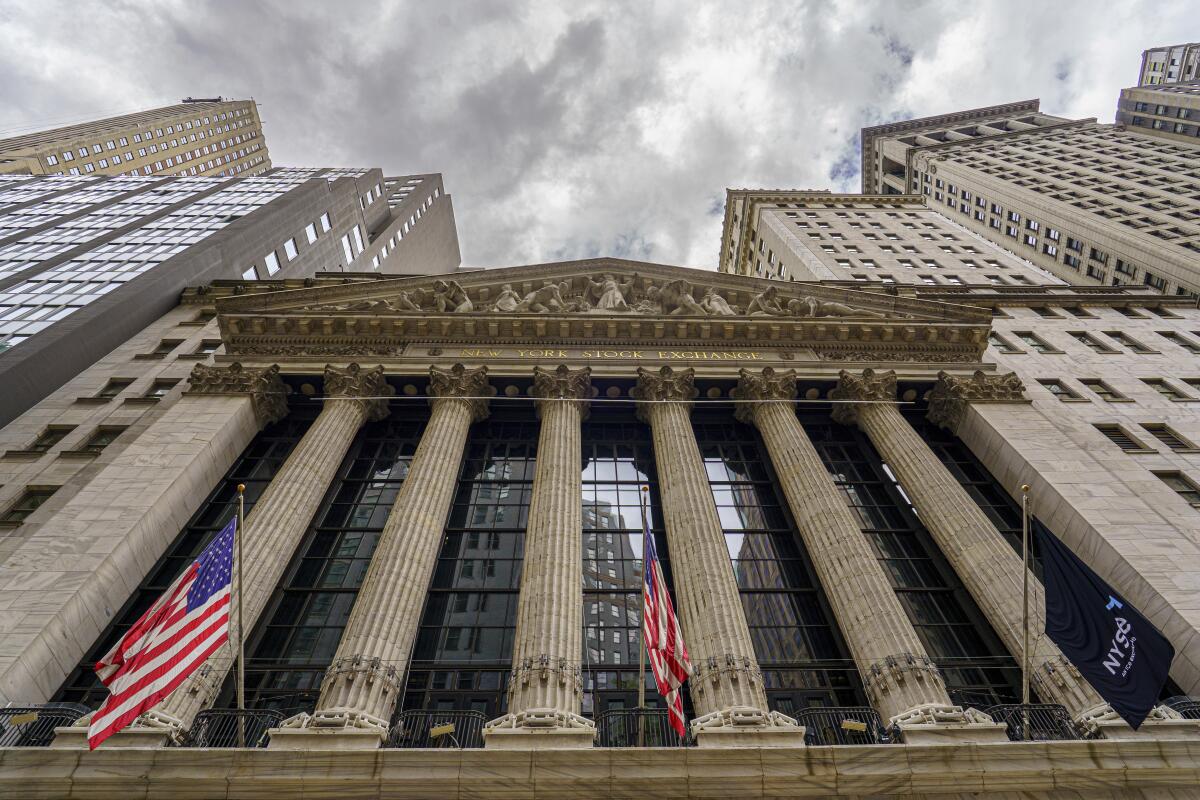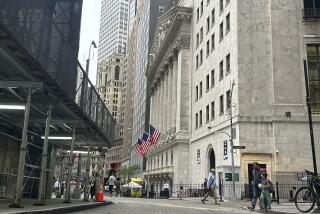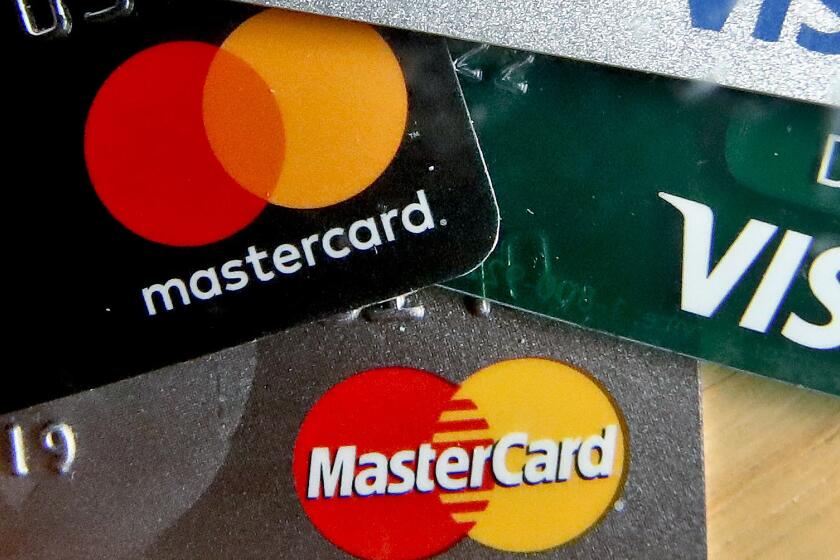Wall Street ends higher, chipping away at losses for August

- Share via
Stocks ended modestly higher Wednesday, extending Wall Street’s recent winning streak to its fourth day in a row and chipping away more of the market’s losses this month.
After a choppy day of trading, the Standard & Poor’s 500 closed 0.4% higher. The benchmark index remains down 1.6% for August, with one trading day left in the month. The Dow Jones industrial average edged up 0.1%, while the Nasdaq composite added 0.5%.
Technology stocks led the market’s gains. Apple rose 1.9% and Palo Alto Networks rose 1.7%. HP was on the losing end with a 6.6% slump after cutting its profit forecast for the year.
Despite more than a year of widespread warnings that a recession was near, America’s economy is, if anything, accelerating.
Wall Street’s focus this week remains a broad mix of economic updates that investors hope will paint a clearer picture of where the economy is headed and whether the Federal Reserve has enough reason to hold off on further interest rate hikes.
A survey of private-sector employers in the U.S. showed that hiring cooled more than economists expected. The report reinforces the latest government data on job openings from Tuesday, which also showed that hiring is cooling somewhat.
The U.S. downgraded its economic growth estimate for the second quarter to an annual rate of 2.1% from 2.4%. Economists had forecast that the gross domestic product, or GDP, assessment would remain unchanged from the initial estimate, though it still marks a slight increase from 2% growth during the first quarter.
Treasury yields fell after the latest economic reports. The yield on the 10-year Treasury slipped to 4.11% from about 4.15% just before the latest GDP report. It stood at 4.12% late Tuesday.
The yield on the two-year Treasury, which tracks expectations for the Fed, fell to 4.88% from 4.90% before the latest GDP release. It stood at 4.89% late Tuesday.
The continued strength of the U.S. economy could require further interest rate increases, Federal Reserve Chair Jerome Powell said in a closely watched speech that also highlighted the uncertain nature of the economic outlook.
“Right now, what’s bad is good,” said Scott Wren, senior global market strategist at Wells Fargo Investment Institute. “It feels like this week, anyway, we’re fully back into bad economic news is good for the market.”
The latest economic updates are signaling that the Fed may be able to pause hiking its main interest rate, which it has pushed to its highest level since 2001 in an effort to tame inflation. The central bank held rates steady at its last meeting and investors expect the same at its upcoming meeting in September.
Wall Street is also hoping that economic data this week show that the Fed’s goal of a so-called “soft landing” is possible. The central bank‘s goal has been to raise interest rates enough to tame inflation without crashing the economy into a recession. A strong job market and consumer spending have helped thwart a recession, and analysts are divided on whether one will occur with any severity.
On Thursday, the government will release its latest update on inflation with the July report on personal consumption expenditures, or PCE. That’s the Fed’s preferred measure for inflation, and it has been cooling for months. Inflation as measured by the PCE price index eased to 3% in June and was as high as 7% a year ago.
On Friday, the government’s monthly employment report for August will cap a heavy week of updates about hiring and jobs.
“If you have modest growth and modest inflation and that’s what we’re moving toward, stocks will have a bumpy road in the interim, but that’s a good environment for stocks,” Wren said.
Market jitters over the possibility that interest rates end up staying higher for longer led to a pullback for stocks this month after what had been a banner year. Even so, the S&P 500, which soared 19.5% through July, remains about 17.6% higher for the year, while the tech-heavy Nasdaq is up nearly 34%.
On Wednesday, the S&P 500 rose 17.24 points to 4,514.87, the Dow advanced 37.57 points, or 0.1%, to 34,890.24, and the Nasdaq gained 75.55 points to close at 14,019.31.
Markets in Asia ended mixed and European markets mostly fell.
AP writers Yuri Kageyama and Matt Ott contributed to this report.
More to Read
Inside the business of entertainment
The Wide Shot brings you news, analysis and insights on everything from streaming wars to production — and what it all means for the future.
You may occasionally receive promotional content from the Los Angeles Times.












